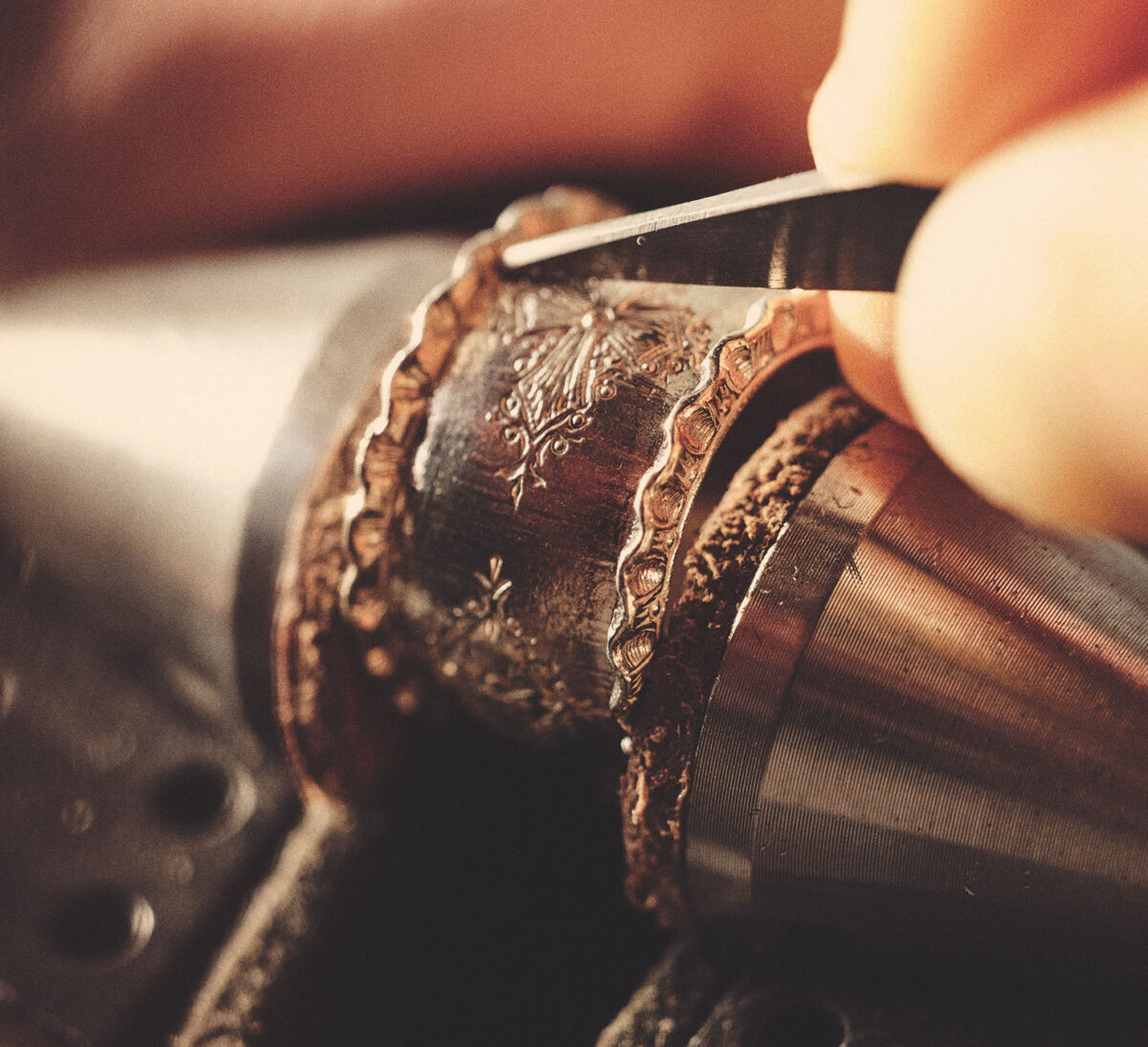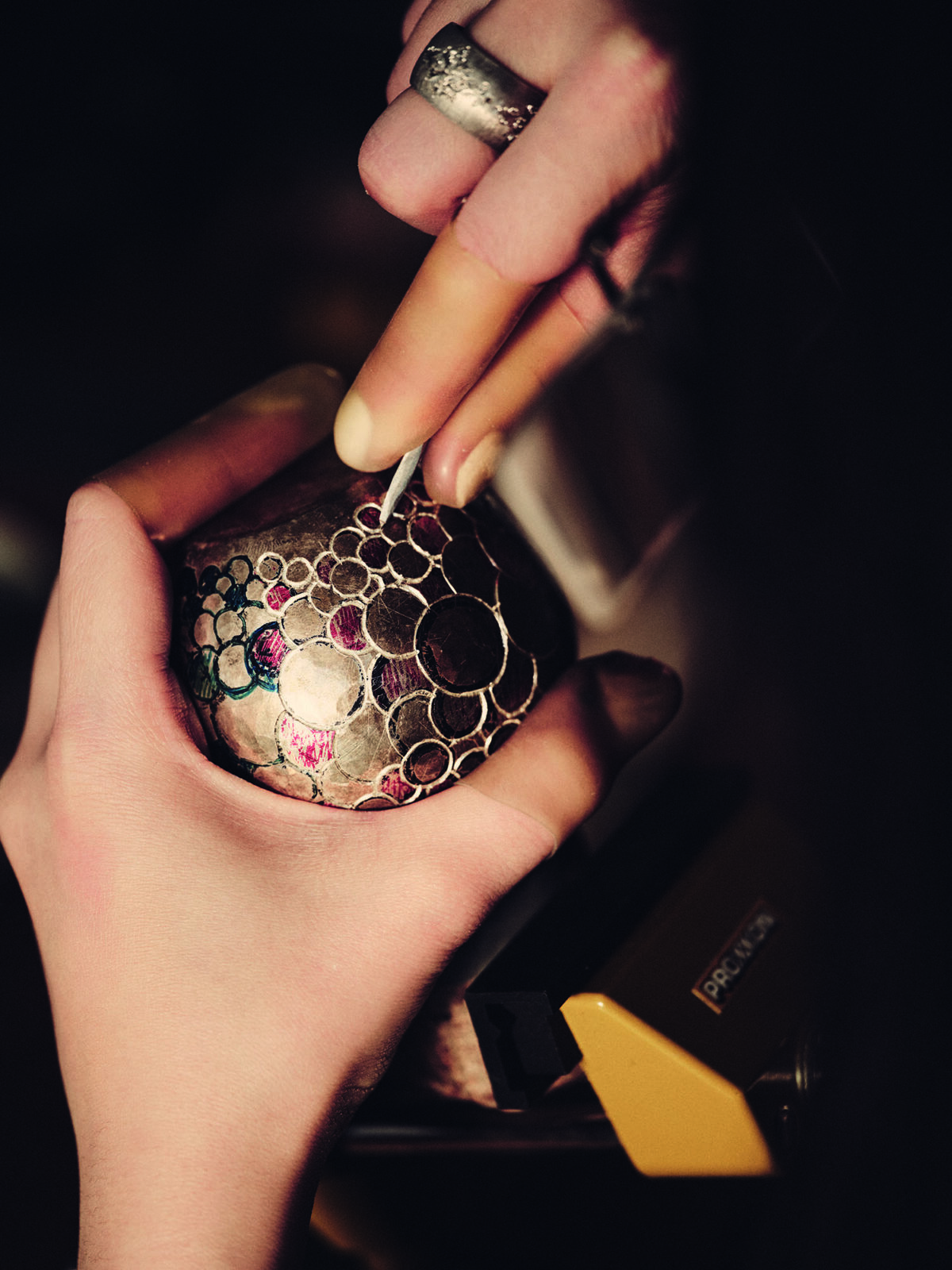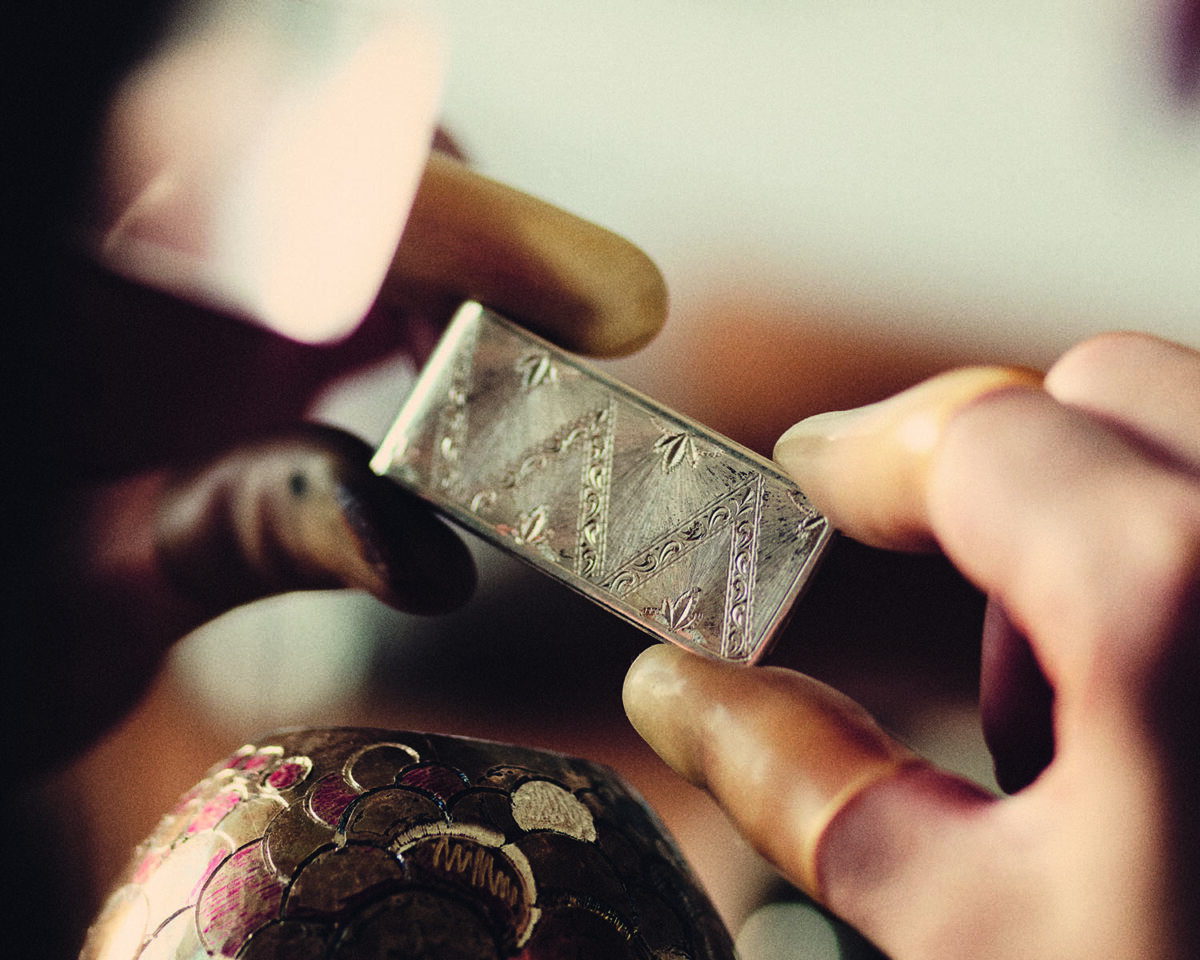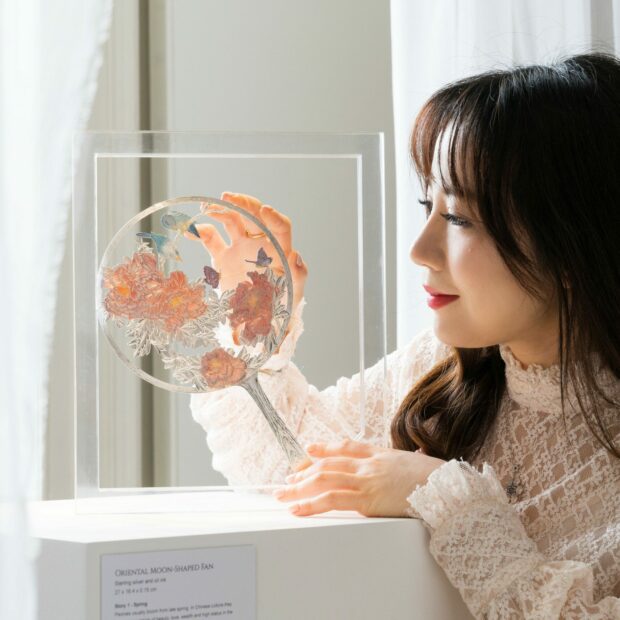Silver Lining by Caroline Roux
21st June 2021

Epona Smith has travelled the world to learn jewellery making. Now, thanks to a QEST Pewterers’ Company Scholarship, she’s planning to add enamelling to her skillset and to make her brand global
“I’ve always been brave, since I was a child,” says Epona Smith, or Chih-Ning Li, who like many Taiwanese people has both a given Chinese name and a chosen English one. We are discussing her arrival in Birmingham in 2014 to study for an MA in Jewellery, having never left Asia before. “It was quite a surprise,” she says, laughing. “Quite rough, quite industrial… At least there’s Selfridges.”
Epona is a petite 31-year-old, and when we meet on a sunny afternoon, she’s wearing a black velvet dress with diamante buttons. As we walk to her apartment and studio near Canary Wharf, she tells me of a recent break-in. Her computer was taken, but everything else was left: trays of refined silver and gold jewellery, boxes, card holders and money clips that demonstrate her exceptional skills as an engraver; banks of costly tools and sketch books. She is moving soon, and though she will miss her current view of the Thames Barrier, will still be overlooking the river. “Water is important to me,” she says. “It’s calming; it’s all about light and reflection.”
Epona’s work is, too – that is what engraving is for. Every incision in the metal can create an intense sparkle and a deep shadow, while more subtle strokes make for a satin surface. Epona can create effects so soft that silver seems to turn into textile. Now, thanks to her QEST funding, she will also pursue her fascination with enamel through a series of lessons with the master enameller Jane Short, who has a workshop in Brighton and is known for her dramatic designs. “I’m hoping,” says Jane, “to find ways of adapting her skills and helping her to achieve her ideas. I’m sure she has plenty.”


Not lacking in ambition, Epona’s Chinese animal is the horse, she says, “which means I seek progress.” She studied graphic design in Taipei – though her parents would have preferred medicine or law – and became interested in jewellery thanks to a part-time job in a store. “So I went and found a teacher, and started learning how to make jewellery, twice a month at weekends,” she says. “That made my dad quite angry.”
Nonetheless, she built up an extraordinary portfolio of work: a crown of polished steel needles that for Epona represent Taiwan’s prickly heat; an exploding epaulette of slender spines with colourful enamel ends; an outsized off-the-shoulder necklace in plain and anodised aluminium. It was more than enough to secure a place at Birmingham City University.
For Epona, the year she spent studying for her masters degree was intense. Students were mostly not allowed to use precious metals, instead experimenting with materials including wood, paper and rubber. Epona made earrings in aluminium and silicon, using the latter to draw intricate feathered mandalas – “A design to heal your heart,” she says.
Making the most of being in Europe, she travelled to France. “I’ve always loved Monet’s garden,” she says. “I’ve been drawing it in watercolours since I was at primary school. But to see the real thing…” She went to Berlin, then back to Paris, taking in the architecture. She started looking at traditional jewellery – online, in antiques markets and inevitably on multiple trips to the V&A museum in London – and finally her research led her to the art of hand-engraving. “I like patterns from my graphic design days, and suddenly I realised that engraving would combine my jewellery and graphics skills,” she says. Epona set off to Florence, where the Le Arti Orafe Jewellery School specialises in the oldest techniques. There she was taught by a 70-something master, Giuseppe Canale, who also works for Buccellati, and developed a taste for the local’s favourite steak, the Bistecca alla Fiorentina.
“Florence is probably my favourite city,” says Epona. “The museums, the antiques, the opulent Catholic artefacts and the tiny craft shops. I wanted to learn Italian, because then they treat you so differently, and you can talk to anyone – the café owner will tell you where to find the best ice cream.” She also found similarities to Taiwan. “We can’t stop talking about food; we’re really family oriented. And everyone rides a moped.”


She was taught the history of her craft, how to make the tools, and how to train both hand and mind. “You use your whole body in engraving. It’s very physical, as well as being a sort of meditation, because it takes complete focus,” she says. “People who are good at it are those who can truly concentrate their mind. Then your mind controls the tools. You can’t think about anything else.” Students begin on brass – not because it is cheaper than silver, but because it is harder to work. “First you have to build up your strength,” she says. “It teaches you to control the tools.” Now she is skilled, she’s free to use her favourite metal. “Nothing sparkles quite like silver,” she says.
Though Epona would have stayed in Italy, “I knew I wanted to build up my own brand, and it wasn’t going to work there,” she says. Instead, she returned to Taiwan and put on a sell-out show. “I really just wanted to show people what I’d been doing, but a jewellery gallery approached me immediately – I hadn’t even worked out my prices,” she says. Friends were enthusiastic, too. “No one had seen engraving before, and they loved it.”

While this gave her confidence, Epona realised that she needed to be in London and returned on an entrepreneur’s visa in 2019. “There is a major support structure here,” she says, “between the Arts Council, the Crafts Council and the Goldsmiths’ Getting Started course.” She was also selected for a Crafts Council Hothouse programme, which mentors makers through setting up a company. “We chose Epona because she already demonstrated an understanding of the sector, and she had tried and tested her product. We could see how serious she was,” says the Craft Council’s Caroline Jackman. “She’s a very determined businesswoman. She has an incredible work ethic, but also a real drive to learn new skills, a real curiosity.”
Epona shows me some dainty gold earrings she is working on – engraved hexagons with diamonds suspended in their centre – which, she tells me, are the beginning of a more accessible line of ready-to-wear pieces. She sells them at shows and often in a more ad hoc way, by wearing them out. “It’s good to wear your own work, anyway,” she says. “It’s the only way you can tell if it’s comfortable, or if it needs modification.” Meanwhile, commissions come via Instagram and word-of-mouth, and she also engraves for Tiffany & Co, where she was doing in-store demonstrations before the pandemic.
In June, if restrictions are truly lifted, Epona will start her sessions with Jane Short. “I really like [Jane’s] style,” Epona says. “It’s very natural and calm. I don’t like heavy colour as it takes away from the engraving, and she really shows the engraving as well; it’s a true combination.” Jane agrees: “When you use a transparent enamel on engraved metal, it creates even more reflection.”
After her move, Epona’s ambition is to open a showroom and workshop. “I want people to be able to see how I work,” she says. “These skills are rare and we need to preserve them and pass them on.” Ever the realist, she thinks it will most likely be outside of London. “As long as it’s accessible by train. Maybe I will go to Brighton, too, like Jane.” As long as it is by the water – from the river to the sea.
This article was written by Caroline Roux with images by Benjamin McMahon. It originally appeared in the Summer 2021 issue of the QEST Magazine.

